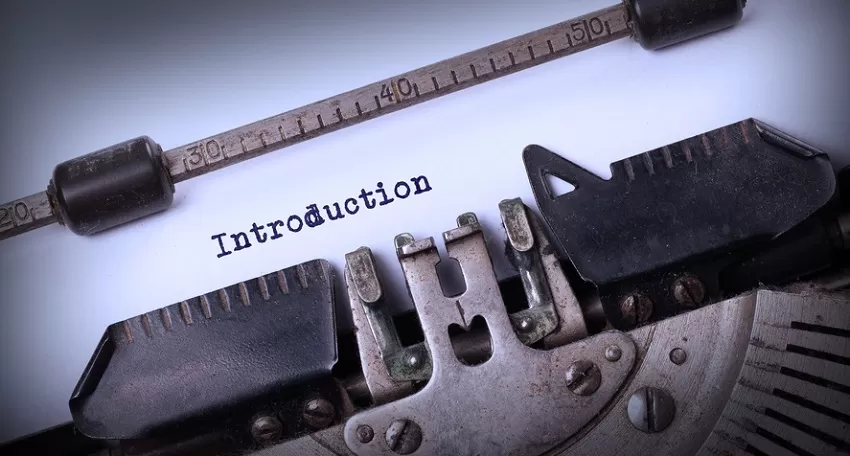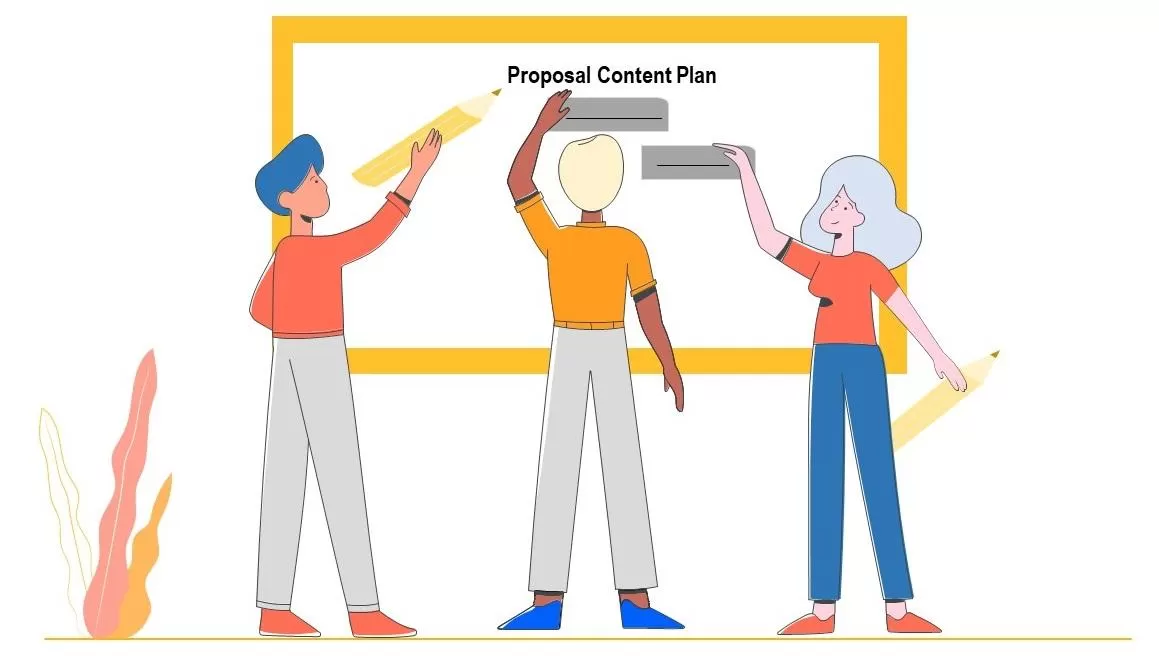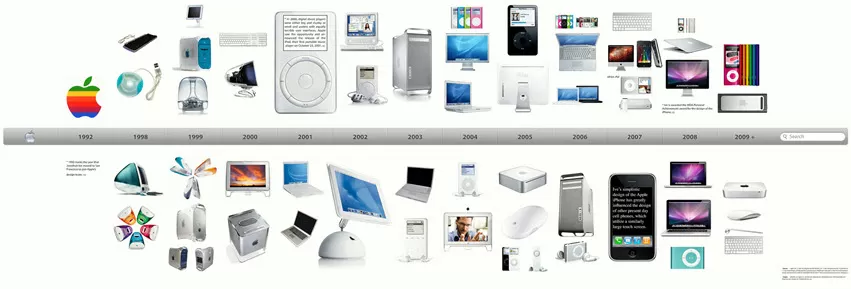Articles
-
 It sounds so obvious that few companies bother to define it. But if you want to maximize your win rate, it’s worth giving some attention to how you define proposal success. You can't intentionally seek proposal success or consistently achieve it if you're just guessing at what it is. Let's start by looking at some common but counterproductive ways that people try to define proposal success: Anything that wins! During the proposal phase you haven't won or lost, so it doesn't help you any to use t
It sounds so obvious that few companies bother to define it. But if you want to maximize your win rate, it’s worth giving some attention to how you define proposal success. You can't intentionally seek proposal success or consistently achieve it if you're just guessing at what it is. Let's start by looking at some common but counterproductive ways that people try to define proposal success: Anything that wins! During the proposal phase you haven't won or lost, so it doesn't help you any to use t- 0 comments
- 4,034 views
-
 Don't let the name fool you. An Executive Summary has a specific purpose in a proposal. But it has nothing to do with the name. If you don’t have time to read the whole proposal, what do you want to know? Is it: See also: Executive Summary A little about each section of the proposal? A recitation of your own mission and goals from someone who claims to "understand" them? Information about the company submitting the proposal? Why this proposal is your best alternative for getting the most of w
Don't let the name fool you. An Executive Summary has a specific purpose in a proposal. But it has nothing to do with the name. If you don’t have time to read the whole proposal, what do you want to know? Is it: See also: Executive Summary A little about each section of the proposal? A recitation of your own mission and goals from someone who claims to "understand" them? Information about the company submitting the proposal? Why this proposal is your best alternative for getting the most of w- 0 comments
- 4,425 views
-

Everything I needed to know about proposal writing I learned from writing the introduction paragraph
As soon the introduction to a proposal is written, it becomes obvious whether it's going good or bad. Right from the start. The first draft of the introduction tells you a lot about the maturity of a company's proposal process. Writing a good introduction demonstrates what you know about what the customer really wants. If you can't write that, then you don't know what you're proposing. And if the introduction consists of nothing more than information that can be found in the RFP, you know that t- 0 comments
- 4,126 views
-
 Sometimes people get stuck writing a technical proposal about something in which they are not an expert. Sometimes the subject matter experts aren’t available or don’t exist within your organization. You can do research, but you can’t become an expert in a week or even a month. So how do you write a technical proposal that competes against real experts, proves your credibility, and earns your customer’s trust? If you’re the stuckee, we have good news for you. We have a little trick that may work
Sometimes people get stuck writing a technical proposal about something in which they are not an expert. Sometimes the subject matter experts aren’t available or don’t exist within your organization. You can do research, but you can’t become an expert in a week or even a month. So how do you write a technical proposal that competes against real experts, proves your credibility, and earns your customer’s trust? If you’re the stuckee, we have good news for you. We have a little trick that may work- 0 comments
- 11,575 views
-
 Take a moment and ask yourself why you're interested in reducing the amount of proposal writing. It could be because you're out of time. Or have strict page limits. Or have other priorities and want to reduce the effort required by a proposal. This is where I'd normally jump in with an ROI calculation that shows that the impact on your win rate of doing a proposal well makes it mathematically worth it. However, today I'm going to skip that and take an unjudgmental look at what it takes to reduce
Take a moment and ask yourself why you're interested in reducing the amount of proposal writing. It could be because you're out of time. Or have strict page limits. Or have other priorities and want to reduce the effort required by a proposal. This is where I'd normally jump in with an ROI calculation that shows that the impact on your win rate of doing a proposal well makes it mathematically worth it. However, today I'm going to skip that and take an unjudgmental look at what it takes to reduce- 0 comments
- 4,764 views
-
 Each and every paragraph in your proposal should make a point. Every sentence within those paragraphs should have its own point. And those points should not be about you. They should not simply describe. They should never make unsubstantiated claims of greatness. You should provide the information the customer needs, while pointing out why you are the customer’s best alternative. But what should you talk about to make those points? How do you go beyond answering an RFP requirement to make your p
Each and every paragraph in your proposal should make a point. Every sentence within those paragraphs should have its own point. And those points should not be about you. They should not simply describe. They should never make unsubstantiated claims of greatness. You should provide the information the customer needs, while pointing out why you are the customer’s best alternative. But what should you talk about to make those points? How do you go beyond answering an RFP requirement to make your p- 0 comments
- 3,843 views
-
 One of the joys of managing proposals is that none of the people who are drafted to contribute to the proposal actually report to the proposal “manager.” And frequently they are expected to contribute to the proposal after all of their other responsibilities are taken care of. It can be like working two jobs. So even when they want to help out, they often aren’t the most enthusiastic and cooperative people to depend on. Organizations that want to grow will do everything to ensure nothing gets in
One of the joys of managing proposals is that none of the people who are drafted to contribute to the proposal actually report to the proposal “manager.” And frequently they are expected to contribute to the proposal after all of their other responsibilities are taken care of. It can be like working two jobs. So even when they want to help out, they often aren’t the most enthusiastic and cooperative people to depend on. Organizations that want to grow will do everything to ensure nothing gets in- 0 comments
- 2,924 views
-
 Imagine that when the RFP is released, the customer already knows you, and they trust you and your capabilities because you've demonstrated that you have insight into what can help them. You've shown them how to get what they need. Along the way, you’ve made recommendations to ensure the RFP doesn’t contain anything that would be a problem for you, as well as inserting some things that give you an advantage. Most importantly, you’ve gained some insight into the outcomes they are trying to achiev
Imagine that when the RFP is released, the customer already knows you, and they trust you and your capabilities because you've demonstrated that you have insight into what can help them. You've shown them how to get what they need. Along the way, you’ve made recommendations to ensure the RFP doesn’t contain anything that would be a problem for you, as well as inserting some things that give you an advantage. Most importantly, you’ve gained some insight into the outcomes they are trying to achiev- 0 comments
- 15,578 views
-
 It is possible to start at RFP release and win. It may be challenging, maybe even extra challenging. It’s not something you should attempt if you’re going to be ordinary in your approach. It’s not something that should be your routine. But it is one of those things that if you are going to do it, you better seek to do it better than the folks who had time to prepare. But how? See also: Dealing with adversity Avoid being disqualified. Do you have the minimum registrations, certifications, and q
It is possible to start at RFP release and win. It may be challenging, maybe even extra challenging. It’s not something you should attempt if you’re going to be ordinary in your approach. It’s not something that should be your routine. But it is one of those things that if you are going to do it, you better seek to do it better than the folks who had time to prepare. But how? See also: Dealing with adversity Avoid being disqualified. Do you have the minimum registrations, certifications, and q- 0 comments
- 1,765 views
-
 What can you expect? You can expect more. We’ve added a community on top of the massive amount of content we’ve created. We’re also opening up our platform to other authors. So over time you’ll see a lot more online training and events posted. Service providers, consultants, and trainers will be available to you. All of it is delivered in an updated, easier to use interface. This was a massive refresh. The online training has also been updated, and the downloads are more accessible. An all-new e
What can you expect? You can expect more. We’ve added a community on top of the massive amount of content we’ve created. We’re also opening up our platform to other authors. So over time you’ll see a lot more online training and events posted. Service providers, consultants, and trainers will be available to you. All of it is delivered in an updated, easier to use interface. This was a massive refresh. The online training has also been updated, and the downloads are more accessible. An all-new e- 0 comments
- 1,054 views
-
 In a past life I helped a company create a new proposal department. The company was part of a billion dollar government contractor. They had a history of business units not accepting process guidance from the proposal group. It’s not an uncommon problem. Does it sound familiar? The old proposal group kept saying things like, “If they’d only submit their drafts on time” or “if they’d only listen to us.” What they meant was “If they’d only do what they’re told.” They thought the solution was for s
In a past life I helped a company create a new proposal department. The company was part of a billion dollar government contractor. They had a history of business units not accepting process guidance from the proposal group. It’s not an uncommon problem. Does it sound familiar? The old proposal group kept saying things like, “If they’d only submit their drafts on time” or “if they’d only listen to us.” What they meant was “If they’d only do what they’re told.” They thought the solution was for s- 0 comments
- 1,117 views
-
Within the MustWin Process Architecture we divide the organizational layer into the following areas: Executive, Approaches, and Resources. The organizational layer forms a context that impacts your ability to win bids. But it can’t necessarily be accounted for as inputs to the process. It’s not part of the process flow, but it impacts every step of the process flow. It is roughly analogous to style in writing, only it’s the management style of the environment your process operates in. Your win
- 0 comments
- 159 views
-
 What you should write about? How should you present it? How do you know if it's correct? Before you jump into proposal writing, you need a plan. And you need to validate that plan to prevent rework. Why this goal is important If you think the best way to figure out what to write about in your proposal is to start writing, you may be making a colossal mistake. The mistake is that you’re skipping the part where you “figure it out.” You are thinking by writing about it. Responding to an RFP is not
What you should write about? How should you present it? How do you know if it's correct? Before you jump into proposal writing, you need a plan. And you need to validate that plan to prevent rework. Why this goal is important If you think the best way to figure out what to write about in your proposal is to start writing, you may be making a colossal mistake. The mistake is that you’re skipping the part where you “figure it out.” You are thinking by writing about it. Responding to an RFP is not- 0 comments
- 487 views
-
 Nearly all of the examples of selling in writing that we see in life teach us the wrong ways to write for proposals. From the ads on TV and the junk mail we receive, to the ads in publications. Even the materials handed to us by other companies are written completely wrong for proposals. And yet, when people sit down to write a proposal, they can’t help but emulate what they’ve seen when others try to sell in writing. Even what we learn in school about writing is wrong for proposals. When you wr
Nearly all of the examples of selling in writing that we see in life teach us the wrong ways to write for proposals. From the ads on TV and the junk mail we receive, to the ads in publications. Even the materials handed to us by other companies are written completely wrong for proposals. And yet, when people sit down to write a proposal, they can’t help but emulate what they’ve seen when others try to sell in writing. Even what we learn in school about writing is wrong for proposals. When you wr- 0 comments
- 1,528 views
-
 When most people think about what their competitive advantages might be, they tend to focus on themselves. They ask questions like “What do we do better?” and “How can we exceed the requirements?” But they are missing that they do not matter. The customer who will be making the decision matters far more than you do. A much better way to find your competitive advantage is to focus on what they prefer. A competitive advantage is something that will make it more likely the customer will pick you ov
When most people think about what their competitive advantages might be, they tend to focus on themselves. They ask questions like “What do we do better?” and “How can we exceed the requirements?” But they are missing that they do not matter. The customer who will be making the decision matters far more than you do. A much better way to find your competitive advantage is to focus on what they prefer. A competitive advantage is something that will make it more likely the customer will pick you ov- 0 comments
- 9,571 views
-
 Figuring out what should go into your proposal is the most important part of the proposal process. It usually starts with an Request for Proposals (RFP) that can be intimidating if you don't know how to read it. To prepare your proposal, you need more than an outline or a compliance matrix to figure out what to write. You need to take into consideration the instructions in the RFP, how the customer will evaluate your proposal, what you will offer, and what you know about the customer, opportunit
Figuring out what should go into your proposal is the most important part of the proposal process. It usually starts with an Request for Proposals (RFP) that can be intimidating if you don't know how to read it. To prepare your proposal, you need more than an outline or a compliance matrix to figure out what to write. You need to take into consideration the instructions in the RFP, how the customer will evaluate your proposal, what you will offer, and what you know about the customer, opportunit- 0 comments
- 31,446 views
-
 To write a proposal, you must overcome eight challenges. You can’t avoid them. You can’t skip any of them. You just have to face them. To help out, we’ve included links to many other articles we’ve written that are relevant to the individual challenges: Complying with the RFP. First you have to read it and understand it. Then you have to cross-reference all the requirements across the various sections. Even if your assignment is for a single section, there may be requirements in other sections t
To write a proposal, you must overcome eight challenges. You can’t avoid them. You can’t skip any of them. You just have to face them. To help out, we’ve included links to many other articles we’ve written that are relevant to the individual challenges: Complying with the RFP. First you have to read it and understand it. Then you have to cross-reference all the requirements across the various sections. Even if your assignment is for a single section, there may be requirements in other sections t- 0 comments
- 27,002 views
-
 It’s not a certain style. It’s not a great layout. It’s not enough time to do proofreading or to have one more draft. It's not even what words you should use. What you need is to know what to write about, the means to make sure it happens, and some way to know if what was written is what you want. What you really need is to: Collect the right intelligence. In order to do the best job of proposing the best outcomes for the customer, you need to have an information advantage. Collecting the right
It’s not a certain style. It’s not a great layout. It’s not enough time to do proofreading or to have one more draft. It's not even what words you should use. What you need is to know what to write about, the means to make sure it happens, and some way to know if what was written is what you want. What you really need is to: Collect the right intelligence. In order to do the best job of proposing the best outcomes for the customer, you need to have an information advantage. Collecting the right- 0 comments
- 10,125 views
-
 Proposal content planning should give a lot of guidance to proposal writers regarding what to write and how to present it. They should be able to follow the content plan like a set of instructions, that they can follow to create the right proposal on the very first draft. You can anticipate many of the things that will need to be addressed in your future proposals, based on the nature of the work that you do and how you manage it. The problem is that unless every RFP really is the same, and not
Proposal content planning should give a lot of guidance to proposal writers regarding what to write and how to present it. They should be able to follow the content plan like a set of instructions, that they can follow to create the right proposal on the very first draft. You can anticipate many of the things that will need to be addressed in your future proposals, based on the nature of the work that you do and how you manage it. The problem is that unless every RFP really is the same, and not- 0 comments
- 1,139 views
-
 Apple is famous for having a designer lead their product development efforts instead of having an engineer lead them. Apple designers obsess over what will please their customers. In many ways that exactly describes what great proposal writers do. So who designs the offering for a company that offers complex services like engineering? Should it be a subject matter expert? Someone who understands the work? Or should it be a designer, someone who understands what will please the customer? Could i
Apple is famous for having a designer lead their product development efforts instead of having an engineer lead them. Apple designers obsess over what will please their customers. In many ways that exactly describes what great proposal writers do. So who designs the offering for a company that offers complex services like engineering? Should it be a subject matter expert? Someone who understands the work? Or should it be a designer, someone who understands what will please the customer? Could i- 0 comments
- 1,456 views



